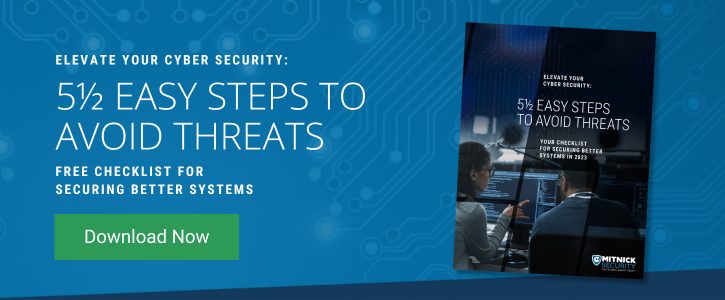In today’s world, using single-factor authentication (SFA) such as a lone password or a PIN number to access private data may no longer cut it. With the rise of cyber security threats — including an increasing number of ransomware attacks — it may be time to explore steps you can take to level up your organization’s cybersecurity.
Using a multi-step sign-in solution known as multi-factor authentication (MFA) has proven to be 99% more effective than a password for ensuring digital safety. Here we’ll discuss what it is, how MFA works, and the many benefits of using multi-factor authentication.
What Is Multi-Factor Authentication?
Multi-factor authentication is a log-in environment in which the user must provide at least two factors for verification before gaining access. Typically, “real” MFA calls for different types of authentication. For example, the IRS Privacy Policy for remote access to federal tax information requires at least two of the following:
- Something you know.
- Something you have.
- Something you are.
In this case, you wouldn’t be able to use a PIN and a password as these are both from the “something you know” category. However, your password and a software token in your possession would count as two different types of factors for true MFA.
What Is the Difference Between Two-Factor Authentication (2FA) and MFA?
Before the introduction of MFA, two-factor authentication (2FA) was the better alternative to using a single-factor method. Later on, cybersecurity professionals discovered the benefits of multi-factor authentication.
Both types of authentication protocols require the user to give at least two types of credentials. The only difference is that multi-factor authentication may use more than two, depending on the level of security required. MFA is a layered approach, so the combined factors offer a higher level of security than even a strong single authentication factor. For example, a FaceID is more secure than a password, but the most secure option would be to utilize both.
How Does Multi-Factor Authentication Work?
As part of your organization's cybersecurity procedures, MFA helps to avoid unauthorized access to your data and internal networks. It does this by incorporating at least two factors to verify the identity of the user before granting access to a restricted area, account, or information.
The Factors of MFA
Although the IRS uses some of these factors types, the complete list is:
- Knowledge - Something you know, like a password.
- Possession - Something you have, like a key fob.
- Inheritance- Something you are, like voice recognition.
- Behavioral- Something you do, like your typing pattern.
- Location - Somewhere you are, like your physical log-in location.
While knowledge factors like a log-in password are relatively common, behavioral and location factors are typically reserved for extremely sensitive data environments. However, since the number of people who work remotely tripled between 2019 and 2021, a location factor may become a crucial step for many organizations.
What Are the Benefits of Multi-Factor Authentication?
1. Added Security
MFA adds layers of security at multiple levels, reducing the risk of a data breach. MFA procedures can be used for your company’s internal applications, network access, and — frankly — any access point to company data. Even if a threat actor were to discover the correct entry for one factor, the other incorporated factors could stop the threat actor in their tracks. This is how companies can prevent employee identity theft even if employees were victims of social engineering attacks.
2. High Value With Low Effort
Although added security is one of the most important benefits of multi-factor authentication, it doesn’t come with the complications you might expect. In fact, set-up and maintenance for MFA procedures are typically easy.
Additionally, industry-compliant MFA may come with a Single-Sign-On (SSO) solution to avoid the hassle of having multiple different passwords for multiple applications while still requiring at least two factors for authentication.
3. Compliance
Many industries have strict security standards, such as the Payment Card Industry Data Security Standard (PCI-DSS). MFA implementation can help you meet the standards required by your industry.
FIDO Authentication
The Fido Alliance is dedicated to reducing the world’s dependence on passwords. They accomplish their mission through FIDO Authentication — technical specifications for using MFA. They also offer certification and assistance with adopting 2FA and MFA solutions in place of SFA.
4. Affordability
Both large and small organizations can add MFA options at a reasonable cost. Although the software types and brands may vary slightly in price and functionality, some basic MFA features may be included in software and applications you already own.
Shore Up Your Cyber Security Measures
The many benefits of multi-factor authentication can be fully realized when paired with a strong security plan to protect your organization from threat actors. The Mitnick Security Checklist outlines how to protect your organization including:
- Information on the latest security threats.
- Security awareness training tips.
- Strategies for hacking your digital and physical security to find vulnerabilities.
To help keep your employees and organization safe from outside threats, download your copy of, “Learn to Avoid Cyber Threats in 5 ½ Easy Steps.”




